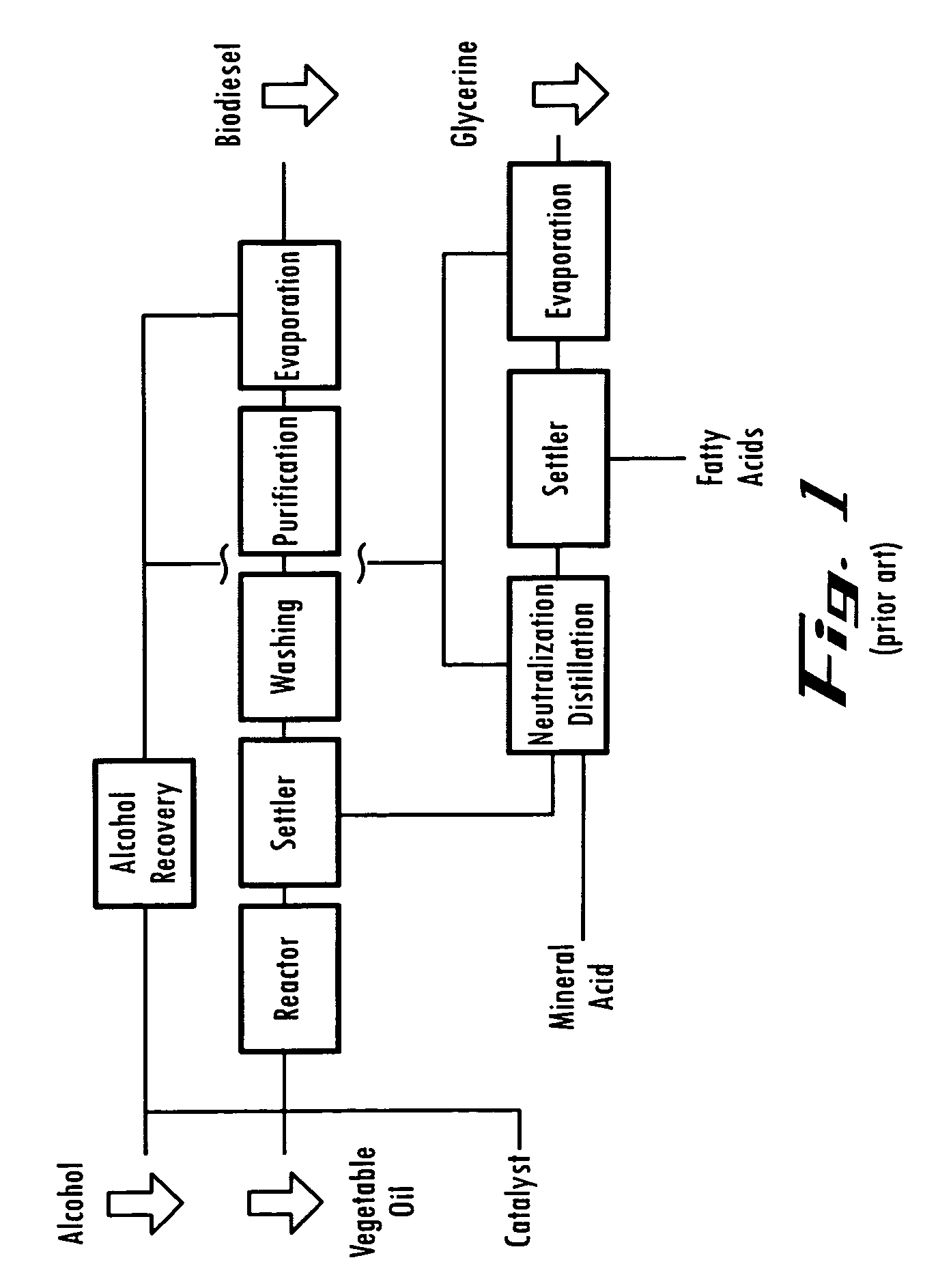Method of electro-catalytic reaction to produce mono alkyl esters for renewable biodiesel
a renewable biodiesel and electrocatalytic reaction technology, applied in the direction of fatty oil/fat refining, fatty acid chemical modification, disinfection, etc., can solve the problem of increasing the amount of co2 in the atmosphere, the inability to find renewable energy sources other than non-renewable fossil fuels, and the inability to meet the needs of renewable energy sources, etc., to achieve the effect of lowering the heat value of the fuel and reducing the nox emission
- Summary
- Abstract
- Description
- Claims
- Application Information
AI Technical Summary
Benefits of technology
Problems solved by technology
Method used
Image
Examples
example 1
Electro-Chemical Reactor
[0113]The electro-potential cell is composed of an anode electrode inserted inside a annular (open circular) member, in a housing, through which a reaction mixture is continuously pumped at flow rates of 25 to 200 gallons per minute (95 to 760 liters per minute). The cathode is composed of a soft copper alloy connected to the power supply+(plus) terminal. The anode is held in place by a ceramic holder and has dimensions exposed to the process fluid of ⅛ to 3 / 16″ (3.2 to 4.8 mm) in diameter and ⅝″ (15.9 mm) in length. The anode is secured in the center of the fluid flow path by the ceramic holder. The cathode is in the shape of a ring and is inserted inside the circular flow member opposite the anode by a distance of 3.5 inches (89 mm). The cathode is connected to the power supply−(minus) terminal and completes the electrical circuit when fluid flows through the cell. The catalytic reaction occurs when the reaction materials are located in the 3.5″ (89 mm) reg...
example 2
Saponification Surfactant Formation
[0132]In the manufacture of soap, one mole of tallow or vegetable oil is heated at 60-65° C. with 3 moles of sodium hydroxide or potassium hydroxide solution. The heated reaction mixture is pumped through the electro-chemical reactor, wherein a voltage of between 800 to 1500 volts DC (at 190-300 milliamps) is applied through the electrodes to assist the reaction. Complete reaction occurs in (100-190 milliseconds). The reaction time is shortened by an average factor of 14,000. The reaction is fat+water+sodium hydroxide or potassium hydroxide+heat+electric charge=water+[glycerol intermediate]+surfactant. The present process applied to saponification surfactant formation yields surfactant without the need to remove glycerol. The glycerol intermediate may be driven out with excess water or any method known in the art. This process changes the standard surfactant process from a batch heating to continuous process. The saponification process reaction tim...
example 3
EP Cell Performance and Biodeisel
[0134]Oils have a low electrical conductivity and increase R3 above (400-800) k-Ohms. Lower anode current discharge decreases thermal stresses of the anode holder and improve the EP Cell long-term wear and maintenance. It is therefore possible to increase the catalytic voltage operating on the oil to produce better results that conventional catalysis. Where carbon chain length and assisting relocating double bond positions and carbonyl groups along the chain to more suitable locations for better biodiesel performance. BTU output from the converted oil will increase due to high energy content.
[0135]High catalytic voltage produced biodiesel has shown to alter the chemical bond structure of the methyl ester. The unsaturated molecule double bonds and locations identified as possible contributors of biodiesel instability have been altered in such a way, resulting in a more stable compound and significantly reducing the amount of oxidation. Biodiesel long-...
PUM
| Property | Measurement | Unit |
|---|---|---|
| weight fraction | aaaaa | aaaaa |
| weight fraction | aaaaa | aaaaa |
| weight fraction | aaaaa | aaaaa |
Abstract
Description
Claims
Application Information
 Login to View More
Login to View More - R&D
- Intellectual Property
- Life Sciences
- Materials
- Tech Scout
- Unparalleled Data Quality
- Higher Quality Content
- 60% Fewer Hallucinations
Browse by: Latest US Patents, China's latest patents, Technical Efficacy Thesaurus, Application Domain, Technology Topic, Popular Technical Reports.
© 2025 PatSnap. All rights reserved.Legal|Privacy policy|Modern Slavery Act Transparency Statement|Sitemap|About US| Contact US: help@patsnap.com



